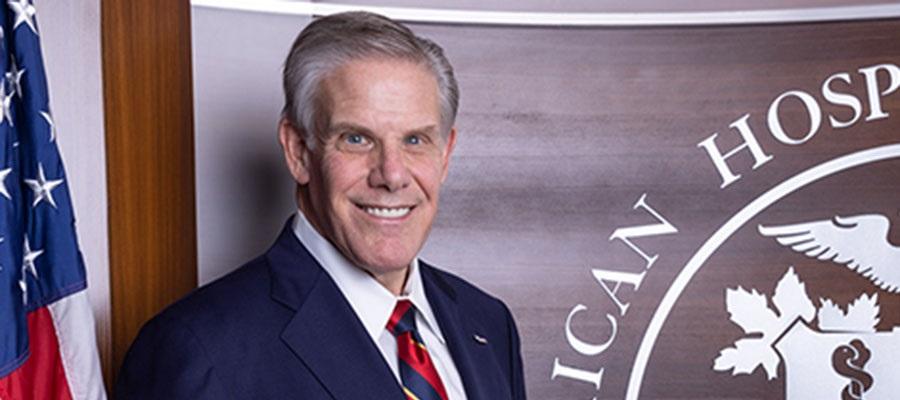In Times of Crisis, the Blue “H” Never Wavers

When Category 4 Hurricane Ian made landfall in Florida two weeks ago, hospitals and their dedicated front-line caregivers did what they always do in times of emergency or crisis — they stepped up and did everything in their power to keep patients and families safe.
By now, you’ve probably read or seen news reports of heroic actions taken by caregivers before, during and after the storm that undoubtedly helped save lives. And new stories of courage, strength and resilience continue to emerge each day.
We have seen this kind of response from hospitals and health systems over and over again whenever our communities have faced danger or dealt with disaster. Across the country, hospitals show us every day in so many ways how they fulfill their commitment to being true partners to the people they serve and cornerstones of their communities.
That commitment to being always there and ready to care is being tested as hospitals and health systems navigate historic workforce shortages, broken supply chains, rapid inflation that has increased the cost of caring, and other severe financial pressures that could jeopardize access to care.
The AHA continues to fight tirelessly on Capitol Hill for additional resources and support to ensure hospitals and health systems can continue carrying out their mission of advancing health in their communities.
Crucial to those efforts is telling your hospital’s story to your community, the media and your elected officials. You can find more information and resources on our Pressure Points webpage to support your efforts. Those personal stories make an impact, as do the tales of selflessness and dedication to patient care that are coming now from our colleagues in Florida.
On that note, the Florida Hospital Association Research and Education Foundation has established a Health Care Heroes Relief Fund to provide immediate financial support to hospital employees throughout the state displaced by Hurricane Ian. The AHA was pleased to make a contribution.
The communities devastated by Hurricane Ian will be recovering and rebuilding for some time to come. And their full partners in the effort, the hospitals and health systems that stood by their side in the storm, will remain at their side in its aftermath.
Because that’s what caregivers do.
Hospitals and health systems continue to be sanctuaries of care, comfort and healing. We must make sure that they can always be there, ready to care.
